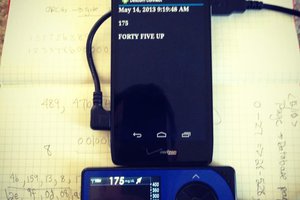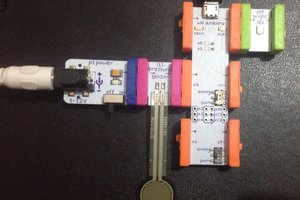negative thoughts prompt a whole host of physiological changes, some of which can be detected fairly easily:
skin conductance -- e.g. http://onlinelibrary.wiley.com/doi/10.1111/j.1469-8986.1991.tb03392.x/abstract
heart rate chance -- e.g. http://www.sciencedirect.com/science/article/pii/S0167876006002194
(not so easy to detect) eeg -- e.g. http://www.sciencedirect.com/science/article/pii/S0191886905000413
On their own, this data is not so useful.I suspect though, that if they were used together, they would a lot better at detecting short term and long term patterns leading to a 'downward swing'.
Mashing in data other sources could improve this too:
voice pattern analysis. -- e.g. http://knoceq.blogspot.co.uk/2013/12/detection-of-disease-through-sound.html
fine movement changes. -- e.g. http://www.ncbi.nlm.nih.gov/pubmed/17515173
How to combine this information? One option is to use artificial neural networks like used by Smartphones for understanding speech http://www.wired.com/2014/06/siri_ai/ .
THE CHALLENGES
--enthusiasm for this project! Join us and spread the word! Citizen Science!
--are there other bio-signals that can be used? E.g. could we develop an unobtrusive headset to be worn to detect errant brain patterns via EEG? e.g. http://www.newscientist.com/article/mg21829146.000-etattoo-monitors-brainwaves-and-baby-bump.html#.VQfp_I6sWw4.
--we will need thousands of people to take part in studies. I expect an app on your phone would monitor your vitals and periodically ask you about your mood. e.g. http://www.ted.com/talks/matt_killingsworth_want_to_be_happier_stay_in_the_moment?language=en
WHO CAN HELP?
--everyone, by taking part in our studies.
--software engineers, hackers, statisticians, psychologists, citizen scientists.
CAN I HELP NOW?
Yes! Start chatting about this. Sign up to the project.
 Dr Andy Woods
Dr Andy Woods




 John Costik
John Costik
 Anmol Agrawal
Anmol Agrawal
 Tom Farnell
Tom Farnell
My project sounds very similar, it provides biofeedback but is more target toward stress then depression. However, it still fits into the same mental health/wearable category. Check it out!
https://hackaday.io/project/6701-bioloop